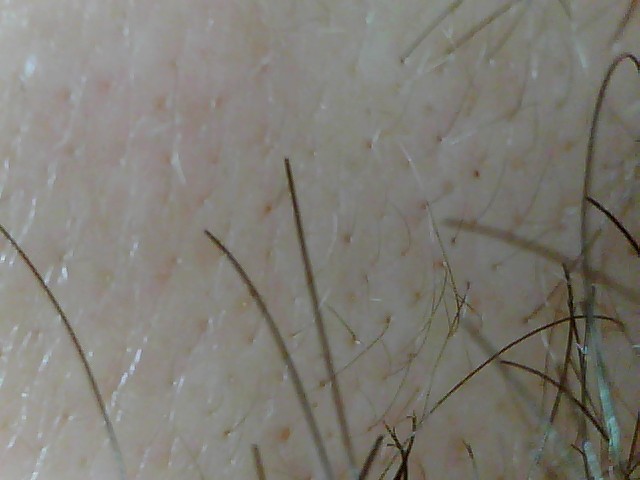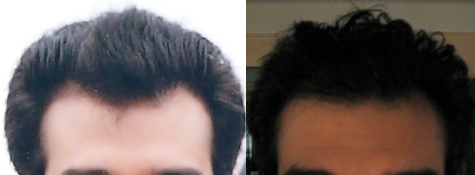I usually wash my hair when the blood has dried up. Then I use a soft shampoo. No Nizoral. My last derma rolling session was Sunday Night. 3.0 mm all in. Had a hot shower so the skin get more permeable, Applied a thick coat of Numfast, dropped my derma-roller 20 minutes in the Iso Alcohol . Worked like a charm. Barely felt anything. Did a good coverage.. My whole pumpkin pretty much and up to the middle of my forehead. It took me 7 days of recovery last time.. I will highly recommend at least 10 to 15 days of recovery for hard derma rolling application.. I used the 3.0 mm with good deep coverage. I bleed pretty much like 2Young. It seems excessive for some newbies but the blood is the magic in rolling. Anyways, a quick wipe and you barely notice anything. You want to stimulates angiogenesis and enlarges your blood vessels network to provide stem cells to the dormant follicles.
[video=youtube;LwAiyDUgALk]http://www.youtube.com/watch?v=LwAiyDUgALk[/video]
http://en.wikipedia.org/wiki/Angiogenesis
Active hair growth (anagen) is associated with angiogenesis.
Mecklenburg L,
Tobin DJ,
Müller-Röver S,
Handjiski B,
Wendt G,
Peters EM,
Pohl S,
Moll I,
Paus R.
Author information
Abstract
After the completion of skin development, angiogenesis, i.e., the growth of new capillaries from pre-existing blood vessels, is held to occur in the skin only under pathologic conditions. It has long been noted, however, that hair follicle cycling is associated with prominent changes in skin perfusion, that the epithelial hair bulbs of anagen follicles display angiogenic properties, and that the follicular dermal papilla can produce angiogenic factors. Despite these suggestive observations, no formal proof is as yet available for the concept that angiogenesis is a physiologic event that occurs all over the mature mammalian integument whenever hair follicles switch from resting (telogen) to active growth (anagen). This study uses quantitative histomorphometry and double-immunohistologic detection techniques for the demarcation of proliferating endothelial cells, to show that synchronized hair follicle cycling in adolescent C57BL/6 mice is associated with substantial angiogenesis, and that inhibiting angiogenesis in vivo by the intraperitoneal application of a fumagillin derivative retards experimentally induced anagen development in these mice. Thus, angiogenesis is a physiologic event in normal postnatal murine skin, apparently is dictated by the hair follicle, and appears to be required for normal anagen development. Anagen-associated angiogenesis offers an attractive model for identifying the physiologic controls of cutaneous angiogenesis, and an interesting system for screening the effects of potential antiangiogenic drugs in vivo.
http://www.ncbi.nlm.nih.gov/pubmed/10771470
J Clin Invest. 2011 Feb;121(2):613-22. doi: 10.1172/JCI44478. Epub 2011 Jan 4.
Bald scalp in men with androgenetic alopecia retains hair follicle stem cells but lacks CD200-rich and CD34-positive hair follicle progenitor cells.
Garza LA,
Yang CC,
Zhao T,
Blatt HB,
Lee M,
He H,
Stanton DC,
Carrasco L,
Spiegel JH,
Tobias JW,
Cotsarelis G.
Author information
Abstract
Androgenetic alopecia (Androgenetic Alopecia), also known as common baldness, is characterized by a marked decrease in hair follicle size, which could be related to the loss of hair follicle stem or progenitor cells. To test this hypothesis, we analyzed bald and non-bald scalp from Androgenetic Alopecia individuals for the presence of hair follicle stem and progenitor cells. Cells expressing cytokeratin15 (KRT15), CD200, CD34, and integrin, α6 (ITGA6) were quantitated via flow cytometry. High levels of KRT15 expression correlated with stem cell properties of small cell size and quiescence. These KRT15(hi) stem cells were maintained in bald scalp samples. However, CD200(hi)ITGA6(hi) and CD34(hi) cell populations--which both possessed a progenitor phenotype, in that they localized closely to the stem cell-rich bulge area but were larger and more proliferative than the KRT15(hi) stem cells--were markedly diminished. In functional assays, analogous CD200(hi)Itga6(hi) cells from murine hair follicles were multipotent and generated new hair follicles in skin reconstitution assays. These findings support the notion that a defect in conversion of hair follicle stem cells to progenitor cells plays a role in the pathogenesis of Androgenetic Alopecia.
http://www.ncbi.nlm.nih.gov/pubmed/21206086
- - - Updated - - -
Photo of bald temples. Over 21 weeks. I have small dots started showing up everywhere, there is a change in the
epidermis structure going on which is really motivating, random hair showing up. Same for my hairline as well. Getting filled and really thick. Reversal of baldness is really slow guys.
My skin of my bald temples used to be "slick bald" and dead looking. Now I have dots showing everywhere with random hair..wtf! Ridiculous.. friggin temples! It is really tough to capture all of them with the dino lite..you need the right angle and the resolution is ****. Dots are not from the derma roller,the pics was taken 10 days after rolling.








